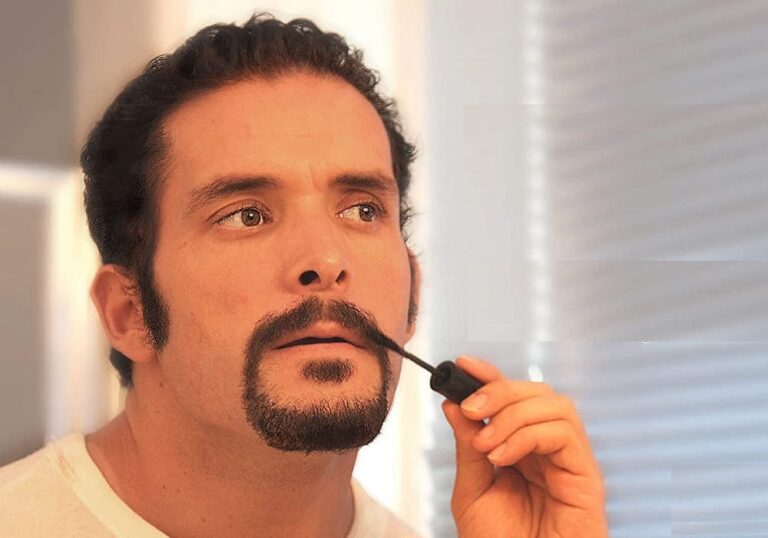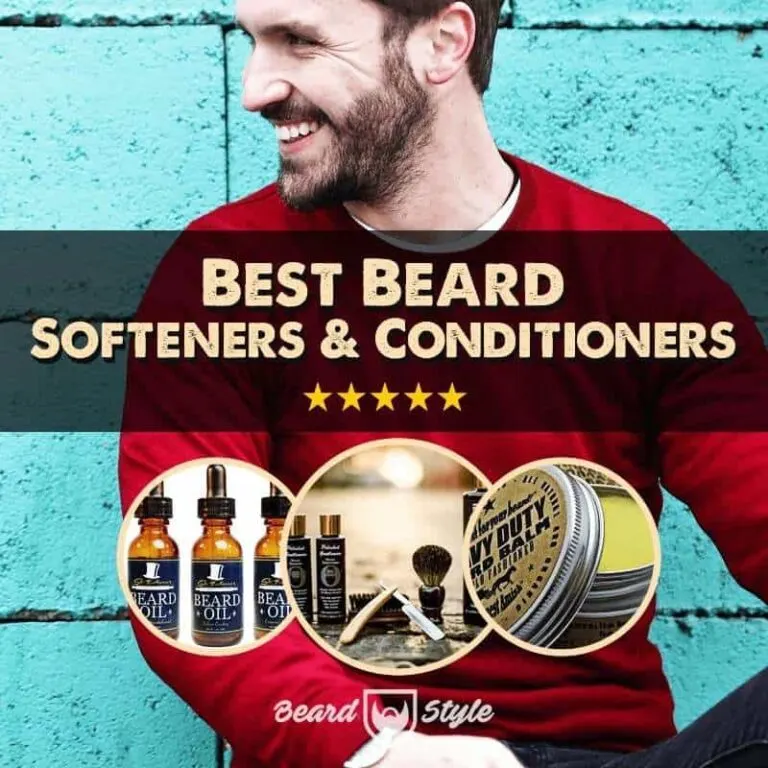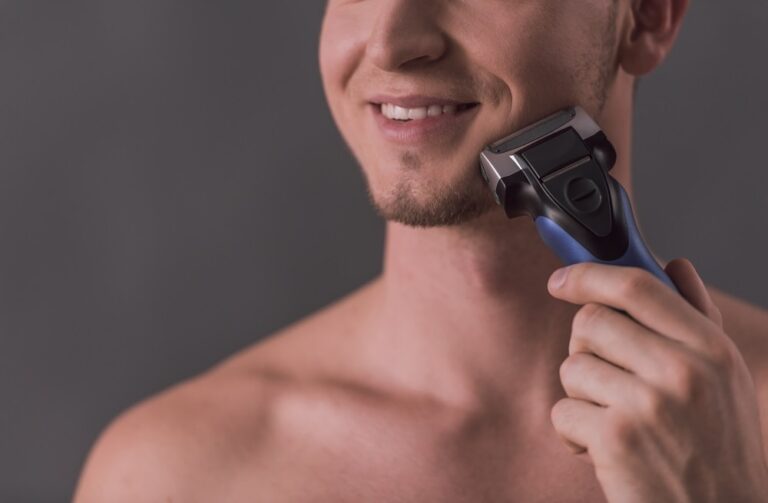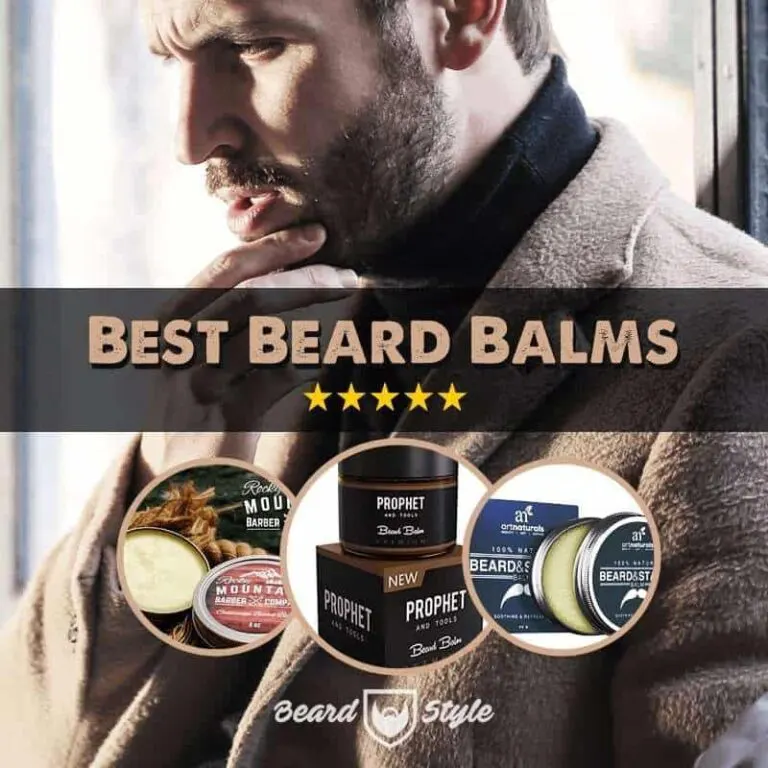7 Best Safety Razor Blades for Beginners in 2024
We may earn an affiliate commission when you purchase through links on our site. However, we only recommend products we truly believe in, ensuring you make informed and trustworthy choices.
Whether you’re leveling up from disposable razors or just looking for a better safety blade, any one of these best safety razor blades for beginners would be a solid choice. The best safety razors are easy to use, won’t scrape or nick your face, and are easy to purchase.
| Image | Title | Editor's Rank | Price |
|---|---|---|---|
 Top Top | Shaving Revolution Japanese Steel Safety Razor Blades | Best Blade for Precision | See Price |
 | Parker Double-Edged Safety Razor Blades | Best for Coarse Hair | See Price |
 | ZOMCHI Double Edge Safety Razor Blades | Best for Fine Hair | See Price |
 | Dorco ST300 Platinum Extra Double Edge Razor Blades | Best Everyday Safety Razor Blades | See Price |
 | Feather Double Edge Safety Razor Blades | Best for Sensitive Skin | See Price |
 | Shark Super Stainless Double Edge Safety Razor Blades | Best for Basic, Daily Shaving | See Price |
 | King C. Gillette Double Edge Safety Razor Blades | Best for Availability & Brand Recognition | See Price |
What Is A Safety Razor?
Safety razors first appeared at the beginning of the 19th century. They replaced the more dangerous straight razors. These razors allow the connection between a razor blade and skin but keep the process fairly safe. The replacement blades for such razors are usually recyclable.
These razors have many advantages over the variety of modern shavers you see on the market today. The biggest benefit is the price. Once you buy such a razor, it can last for decades unlike the state-of-the-art shavers, which tend to break down in a couple of years. The replacement blades are cheaper and seem to last longer.
However, a safety razor has a high learning curve. Beginners may go around with nicks and cuts for a week or so until they get the hang of using it.
Best Safety Razor Blades for Beginners
Here are our top picks for the best safety razor blades for beginners.
1. Shaving Revolution Japanese Steel Safety Razor Blades: Best for Precision
Shaving Revolution’s Platinum Series safety razor blades cost a little more than some other brands for a package of 50, but the craftsmanship makes them worth it. These Platinum Series blades are made from high-quality Japanese stainless steel coated in platinum and wrapped individually in wax paper to protect the razors and your hands.
Shaving Revolution designed the super-fine edge to glide over your skin without causing razor bumps or nicks. They also make a shaving soap and cream for you to use with these blades for the ultimate shaving experience. But it’s not necessary to use another product for good results.
2. Parker Double-Edged Safety Razor Blades: Best for Coarse Hair
Parker has been manufacturing some of the best safety razor blades for beginners for over 45 years. Made with high-quality stainless steel and coated in both platinum and tungsten for extra strength, Parker’s safety razor blades will stand up to even the toughest beards. Swedish steel and a polymer coating process offer a close, comfortable shave.
These safety blades are compatible with almost any safety razor, whether designed for men or women. The handy case contains 100 blades and doubles as blade disposal, with a slot for used blades to provide easy and safe handling.
3. ZOMCHI Double Edge Safety Razor Blades: Best for Fine Hair
ZOMCHI’s platinum-coated razor blades come in packs of 50 that will last the average person over 300 shaves. Ten inner sleeves make it easy to take a few when traveling. Each blade is wrapped in wax paper to preserve its sharpness and make it easier to handle.
ZOMCHI’s blades packaged in 50-count packs were designed for those who shave less frequently or have fine hair. Their 100-count packages contain some of the best safety razor blades for beginners who shave daily or have coarser hair.
4. Dorco Double Edge Safety Razor Blades: Best Everyday Blades
The Dorco ST300 Platinum Extra double edge razor blades are an inexpensive choice for the daily shaver who needs an everyday, reliable product that gets the job done. They’ll fit all safety razors, men’s or women’s, and come in packs of 100.
The platinum coating and forgiving edge make Dorco safety blades an easy choice for beginners. They offer the perfect compromise between a finely honed edge that gives the closest shave and one too forgiving that feels dull and pulls across the skin. If you’re new to using a safety razor and learning how to apply the right amount of pressure, these blades can save you from some painful mistakes.
5. Feather Double Edge Safety Razor Blades: Best for Sensitive Skin
Feather stainless-steel razor blades work well for men who want the closest shave possible without having to change their blade every few days. Feather blades last longer than many other brands without dulling.
Available in a 10-count or a 30-count, these safety razor blades stay sharp for almost two weeks, even with daily use. Feather has been manufacturing the highest-quality blades since 1932, so you know there are years of craftsmanship built into each one.
6. Shark Super Chrome Double Edge Safety Razor Blades: Best for Basic, Daily Shaving
Shark’s chrome series are some of the best safety razor blades for beginners because of the chrome finish and polymer coating that offer long-lasting smoothness. Designed to fit safety razors made by all the top brands, Shark chrome blades come individually wrapped in a 100-blade package.
They’re generally an economical choice for people who prefer to change their blades a little more often than most. While you can comfortably get a week or more out of each razor, users who like to change their blades every few days can usually save money with Shark brand blades.
7. King C. Gillette Double Edge Safety Razor Blades: Best for Availability & Brand Recognition
Gillette is one of the most recognizable brand names in shaving supplies and one of the most trusted companies. They’ve been producing some of the best safety razor blades for beginners since 1901. The platinum coating provides an easy glide, and the perfectly honed edge works well for most skin types.
Gillette makes these razor blades to fit in most safety razors and sells them in packs of ten. The blades are designed for men with a precision edge to help shave beards and sideburns with perfect lines.
How to Shave with A Safety Razor
When you are shaving with a safety razor for the first time, be ready to experience nicks and cuts. Smooth and truly safe shaving will come with experience.
- Wash and moisturize your skin properly (the best time to shave is when you just came out of the shower and your skin is soft and wet).
- Apply a thick layer of shaving cream.
- Apply pressure to check how well the blade works. In most cases, slight pressure is needed to do the job. Don’t press the razor hard against your face as you do with 3-blade cartridges.
- Glide the razor against your skin in short strokes.
- Do a few strokes with the grain.
- Apply more shaving cream.
- Do several more strokes against the grain.
- Rinse the face with cool water and apply aftershave.
Following Video Shows How to Get A Comfortable Shave with A Safety Razor
How Long Do Safety Razor Blades Last?
The time a safety razor blade lasts depends on many factors. It has to deal with its quality and the thickness of your hair. The period also depends on how often you need to shave and the area you are shaving. In general, its blade lasts for one week.
Fixed vs. Adjustable Safety Razor
Fixed razors don’t allow you to adjust the blade exposure. Meanwhile, adjustable razors let the user choose how exposed the blade is. Men, who prefer aggressive shaving, meaning they are comfortable with bared blades, usually opt for an adjustable razor. Other men prefer fixed razors since they are more durable.
Things to Look for When Choosing A Safety Razor
- Consider the construction. Butterfly head razors are good for quick blade changing, two-piece razors are more durable
- Look at the handle. Does it seem to provide a good grip? Remember, you may need to spend a long time with the razor in hand.
- How heavy is the razor? Lightweight razors may be harder to handle since you have less control of the pressure.
- Check out the way the blade is exposed. It should be equally visible from both sides of the blade. Razors that feature a more exposed blade are often called “aggressive”.
- Find out if the razor is compatible with standard blades otherwise you may incur additional expenses.
- Check out the material of the razor. Stainless steel razors are the most durable. However, they are pricey. We reviewed a high-quality safety razor earlier in the article (Feather All Stainless Steel Double-Edge Razor)
- Read customers’ reviews. This can help you determine how close a shave the razor offers.
- If you are using the blade for the first time, buy a model for beginners. We reviewed the best razor for beginners earlier in the article (Edwin Jagger Double Edge Safety Razor).
- If you have large hands, consider avoiding razors with short handles. They are better for precise shaving than long-handled models but may not fit into your hand, making the shaving tough. We reviewed a good long-handled option earlier in the article (Parker 99R – Long Handle Heavyweight Butterfly Open Double Edge Safety Razor).
Tips for Using Safety Razors
- Always prepare your skin for a shave. Consider light exfoliating cleansers.
- Use a safety razor right after you come out of the shower.
- Men with sensitive skin should consider using pre-shave oil.
- Immerse the blade in hot water before using it. It can give you a more comfortable shave.
- Apply a very thick coat of shaving cream or soap to avoid nicks and cuts.
- For your first safety razor, choose the least aggressive one.
- Don’t apply too much pressure when shaving. A light touch is enough for a safety razor to do its job.
- Replace blades at least once every 7 days to avoid razor burn and irritation.
- Start going with the grain first. Then shave against the grain.
- Always apply aftershave lotion after shaving. This can keep the skin irritation to a minimum.
FAQs
Q: How do I choose the best safety razor blades?
You should consider several factors when choosing a razor blade. Most blades will tell you whether they’re for sensitive skin or not. They’ll also generally say whether they’re best for fine or coarse hair if it matters. A look at the sharpness can help, too. The sharpest blades are better for the more experienced shavers who are more practiced handling a safety razor.
Q: What’s the most important quality to look for to find the best safety razor blades for beginners?
The most important quality is the edge of the blade itself. If you’re a beginner, you might think the sharpest blade would be the easiest to use. But you should choose one with an average edge until you get used to using a safety razor and know how much pressure to apply without irritating or nicking your skin.
Q: What’s the difference between the metals and coatings used in making razor blades?
Most safety razor blades consist of stainless steel or carbide steel which are strong metals that hone to a fine edge. They resist rust, along with less expensive chrome blades. The coatings are often titanium, platinum, or a polymer that helps the blade glide smoothly over your skin. Uncoated razor blades are available, too. Which ones to choose boils down to personal preference.
Q: How often should I replace my razor blade?
The best safety razor blades for beginners will last, on average, about a week, but you can replace them more or less often as you see fit. Heavily coated blades with a fine edge will probably last a little longer, while less expensive blades give you a more comfortable shave if you change them out every two or three days. No single answer is right for everyone.
Q: Can I use any brand of razor blades with any safety razor?
Any safety razor should accept any brand of double edge razor blades. The razor itself should be adjustable. You should be able to adjust the space between the razor and your skin, for example. But any brand should fit as long as the razor is a standard-sized blade with two edges.
Q: How are safety razors different from straight razors?
Straight razors have a much higher learning curve while safety razors are easy to use. Cutting yourself with a straight razor is more likely than a safety razor.
Q: Why choose a safety razor over razors with cartridges?
A safety razor provides a highly close shave. It’s environmentally friendly since the blades are recyclable.
Q: Do safety razors cause ingrown hairs?
They do, just like any other razors. In order to avoid ingrown hairs, exfoliate the skin on a regular basis.













